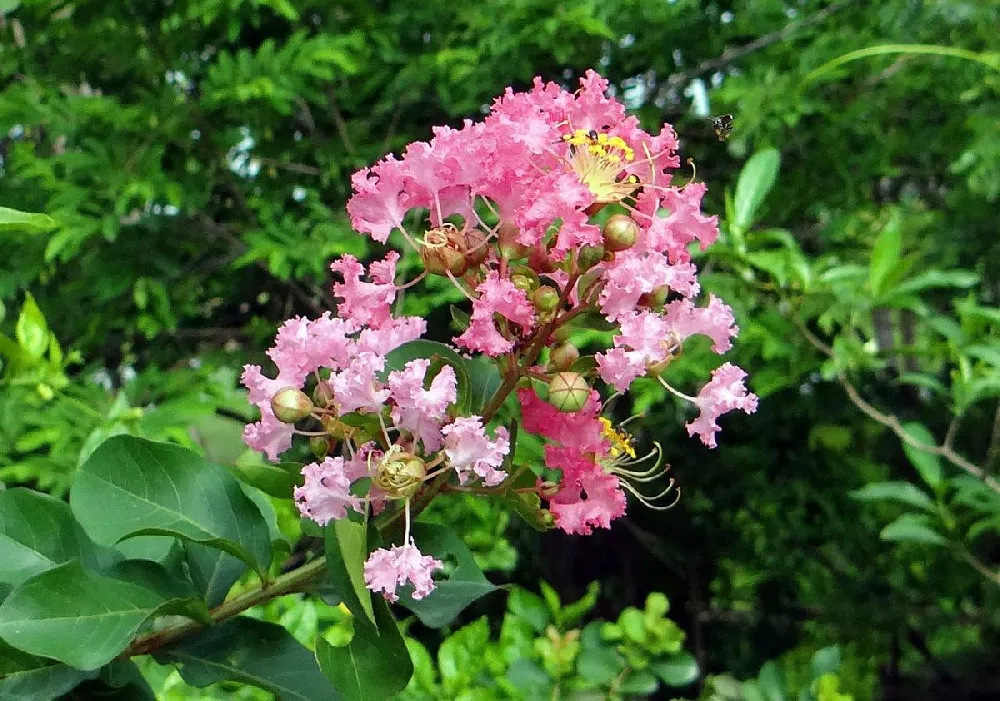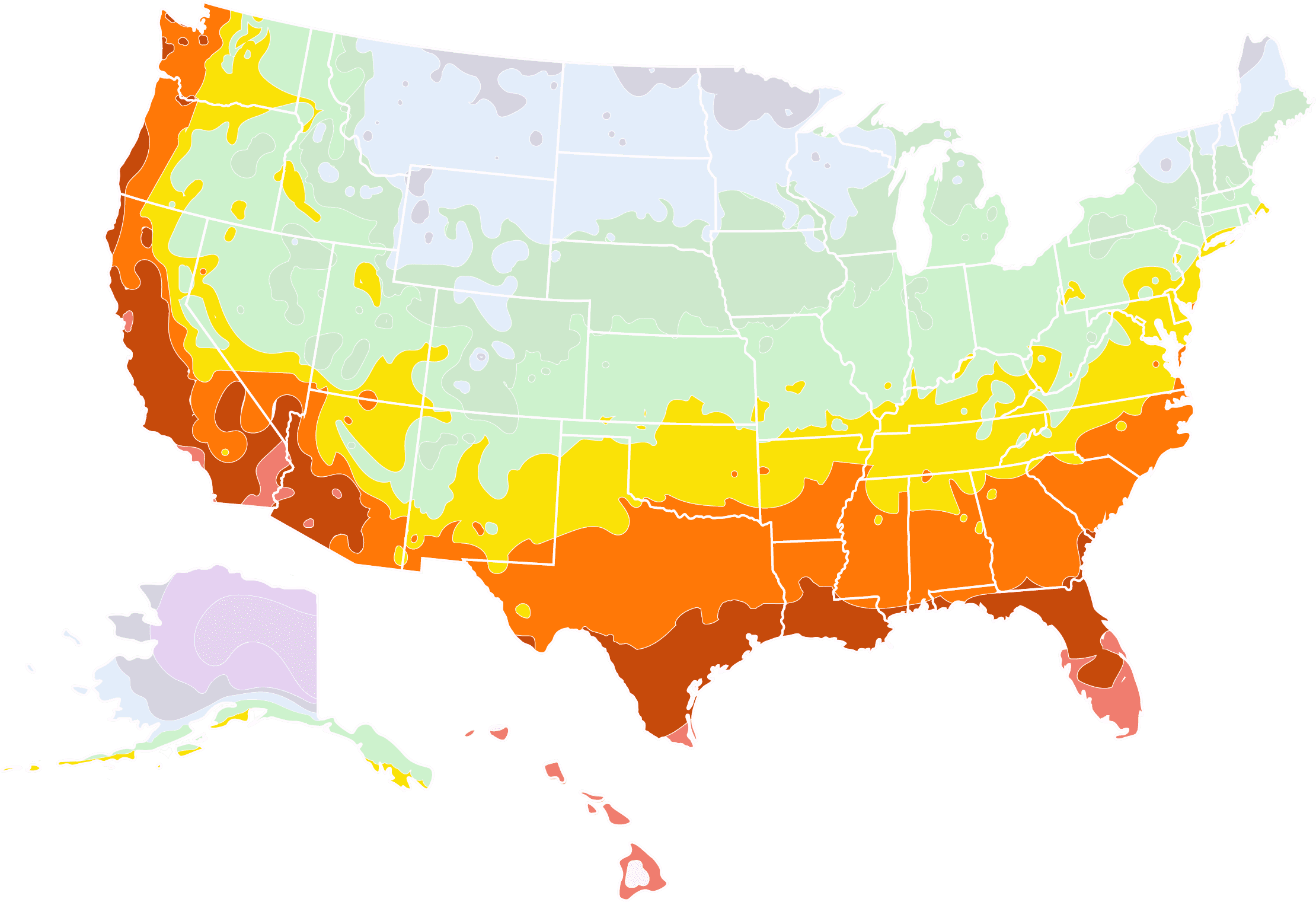- Home >
- Flowers >
- Trees and Plants with Pink Flowers >
- Tonto Crape Myrtle Tree
Tonto Crape Myrtle Tree for Sale - Buying & Growing Guide
- Ships in 1-2 days
- 1-Year Warranty Eligible
- Pots or accessories are not included unless specified in the product options.
Shipping Details:
Products shipped through FastGrowingTrees.com. Once your order is shipped, you’ll receive an email with a tracking number and estimated delivery date. Most orders will ship immediately.
The tonto crape myrtle tree, which goes by the botanical name Lagerstroemia indica 'Tonto,' is one of the best crape myrtle varieties to use if you are working with a relatively small planting area. At maturity, the tonto crape myrtle tree grows to be around 10 feet tall with a similarly-sized spread. That relatively compact size allows you to enjoy bright red crape myrtle blossoms and an impressive display of maroon fall foliage even if you don't have a large yard.
- The tonto crape myrtle has a manageable mature size of about 10 feet tall.
- Both the blooms and the fall leaves hold a red color.
- This plant is deer resistant and adaptable to many soil types.
Plant Care
Sunlight

The tonto crape myrtle tree performs best in full sunlight but may tolerate partial shade as well.
Watering
Water multiple times per week during establishment. After establishment, water about once per week or less.
Fertilizing

Feed this plant with an all-purpose fertilizer once per year in early spring.
Planting and Care
Planting instructions
The tonto crape myrtle tree can adapt to many different soil types but will perform the best when it lives in soil that is moist but well-draining and contains plenty of nutrients. The area in which you plant this species should also receive 6 hours of light per day. However, it’s possible for this plant to survive with a bit less light, too. Dig a hole that is considerably wider than this plant’s root ball to encourage the roots to spread outward. Adding a thick layer of mulch to the planting area will help maintain proper soil moisture.
Watering and nutrients
During this plant’s establishment period, you’ll need to water it about twice per week or more to maintain consistent soil moisture. As this plant gets a bit older, it will begin to develop drought tolerance. Despite that, it is better to continue watering your tonto crape myrtle about once per week during the growing season. You should plan to feed your tonto crape myrtle tree just once per year in the early spring, using a balanced fertilizer.
Pollination
Pollination is not typically a concern of those who grow the tonto crape myrtle tree, as this plant does not produce a harvest of fruits that humans commonly eat. In the spring, when the plant is in bloom, it will attract several pollinator species, including bees, which will transfer pollen from one flower to another. Since the tonto crape myrtle is a self-pollinating species, it is able to conduct pollination on its own without the need for an additional pollinator companion plant.
Pruning
As is the case for most crape myrtle trees, it is best to prune your tonto crape myrtle tree during the late winter and early spring while the plant remains in its dormancy phase. When pruning, you should use tools that are as sharp and clean as possible. Use those tools to remove any dead or damaged limbs from the tree and to thin the canopy to promote air circulation. You can also perform deadheading while this plant is in bloom to promote more flowering.
Pests, diseases and animals
The tonto crape myrtle tree is known to have incredible disease resistance compared to other related crape myrtle varieties. This plant not only wards off infections but is also able to resist deer browsing better than most plants as well. However, this general toughness and durability expand beyond this plant’s ability to resist disease, as the tonto crape myrtle tree is also capable of surviving in many different soil types with ease. As such, this plant will remain healthy on its own in just about any planting location.
Achieving maximum results
When pruning a young tonto crape myrtle tree, it is helpful to focus on developing a set of three to five main branches. Establishing these main branches at a young age allows this plant to develop a strong and healthy structure and helps ensure the canopy does not become overcrowded. During pruning, you should also look out for any shoots or leaves that emerge from the base of this tree’s trunk, as that growth can detract from the plant’s main form.
FAQs
Is the tonto crape myrtle tree a tree or a bush?
The tonto crape myrtle tree can grow either as a small tree or as a large bush. This plant typically has a multi-stemmed habit and a rounded canopy, which are two reasons why it is difficult to classify it as strictly a tree or a shrub. But regardless of how you group this plant, its small stature makes it an ideal plant for many people. Most tonto crape myrtle trees will reach just about 8 feet tall and wide at most.
How fast does the tonto crape myrtle tree grow?
The tonto crape myrtle is a fast-growing plant species that can add about 1-2 feet of new growth per year. At that rate, it does not take the tonto crape myrtle much time to reach its comparatively small mature size. However, while this plant expands at a rapid rate, it is rarely considered to be an invasive plant. Neither the roots nor the above-ground structures of this plant are likely to outcompete or overcrowd other plants in your garden.
Where do crape myrtle trees come from?
The original crape myrtle tree species, Lagerstroemia indica, comes from the tropical parts of Asia. However, the beauty of this plant has led to it being grown in many different parts of the world, including Europe and the Americas. In those regions, it has undergone both naturalization and many rounds of cultivation. Through cultivation, many crape myrtle varieties have come into being and gained popularity, including the tonto crape myrtle tree.
Compare Similar Products
You can't add more Product Name - Product size to the cart.
OK









